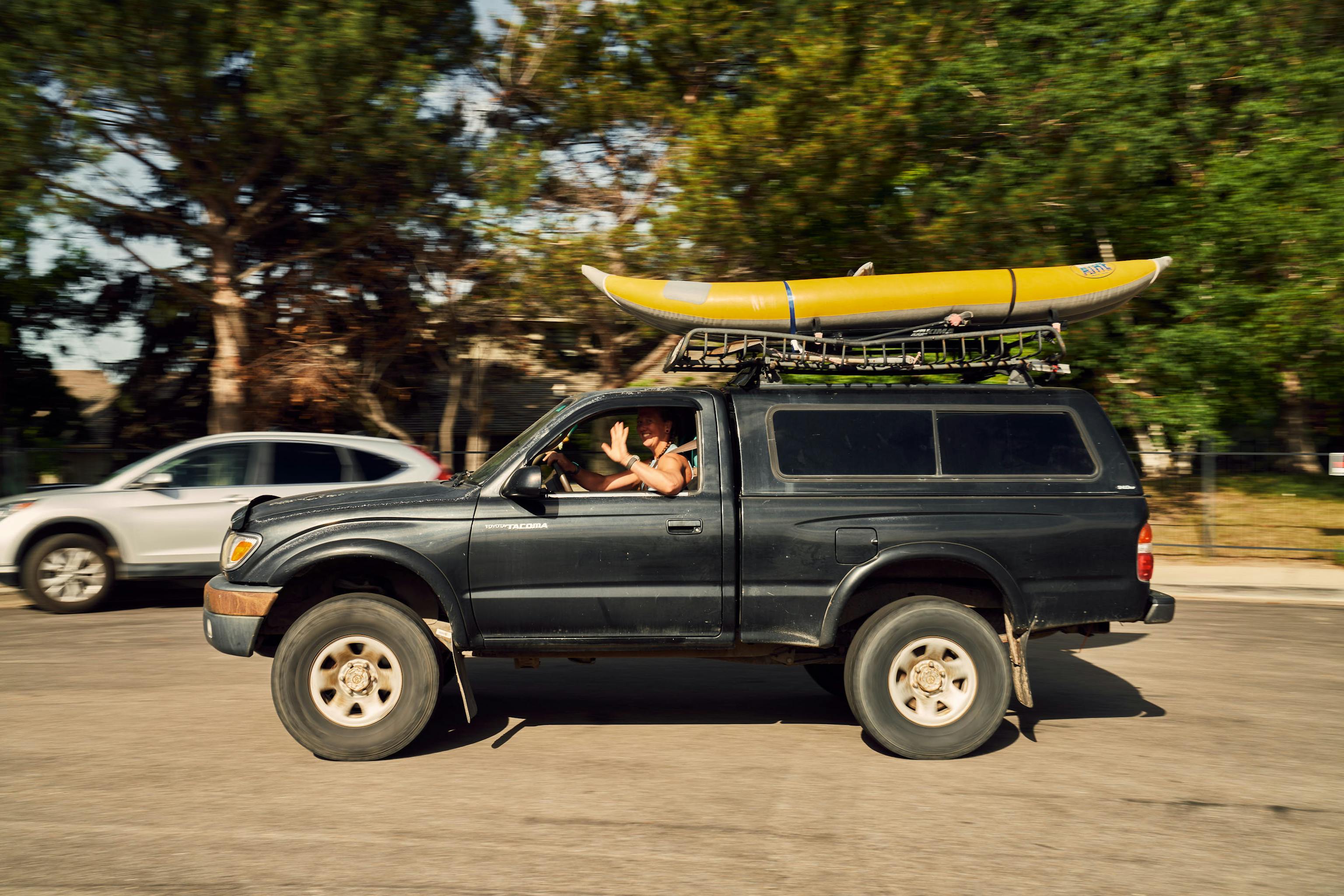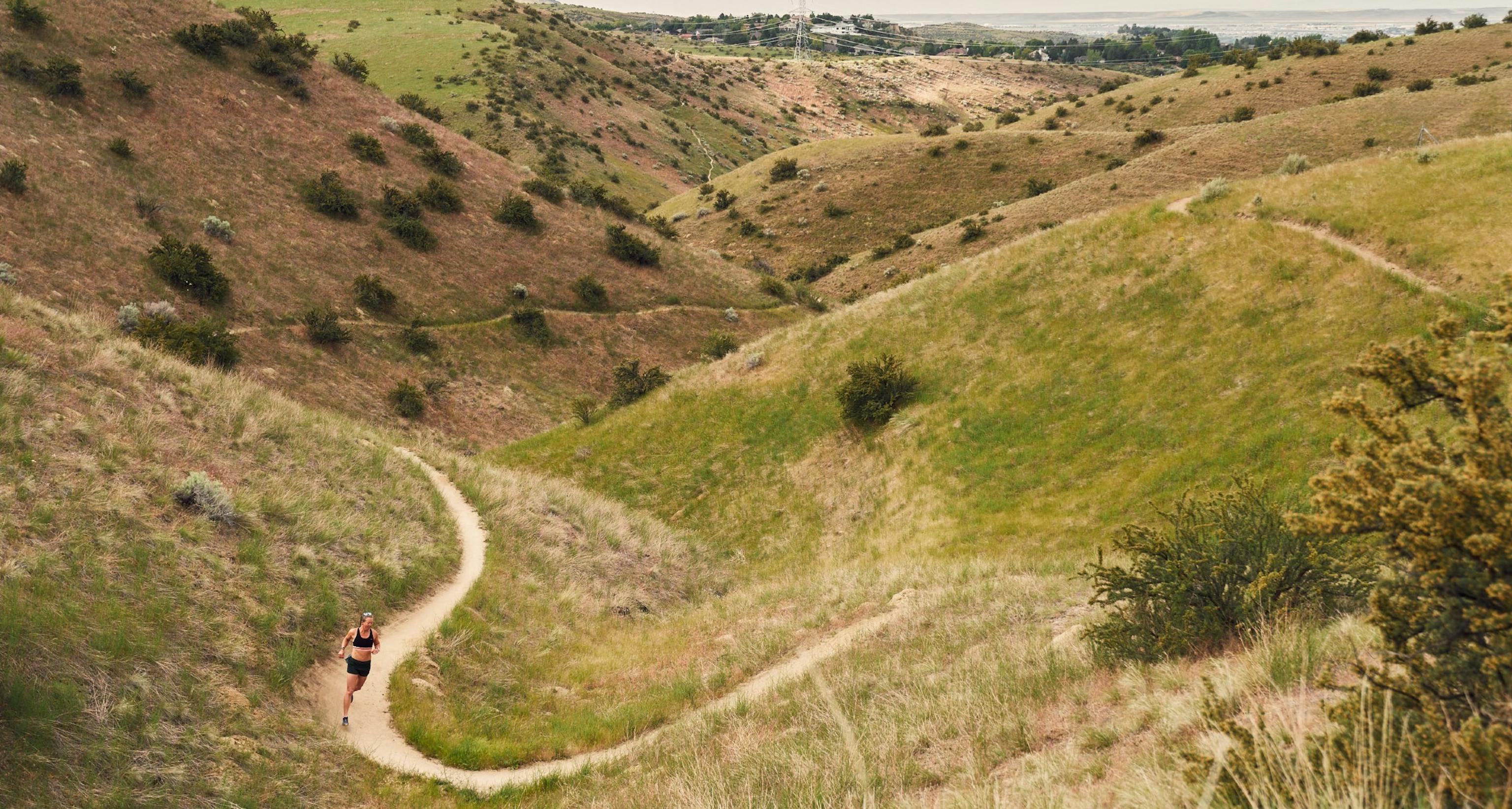
There is No
Off-Season

When she isn’t fighting fires, smokejumper Martha Schoppe runs 350-mile races
Words by Micah Ling
Photography by Matt Larson
It was cool and raining in Boise, Idaho, when Martha Schoppe began to run a 5K. At the beginning of each season, smokejumpers are tested for time. They are the elite of the elite when it comes to firefighters and they need to be ready for anything when parachuting into a wildfire they’re tasked with controlling. Instead of calculating what it’s like in the midst of an area — what the wind is doing, how the fire is moving, what’s fueling the flames — smokejumpers get right in the middle of it all, making important decisions on the ground and in the heat of the moment.
Martha looks like someone who could kick your ass or save your life — she can do both. But she’s also the person you want to stay up late with, talking for hours. On the day of her 5K test, her goal was to run sub-22:30, a requirement for the job, on a nearly flat stretch of road. She arrived for pre-season smokejumper training from her home in Durango, Colorado the night before and had to adjust to the lower elevation and change of scenery. Both Boise and Durango are surrounded by mountains, but the peaks loom larger in Durango, which sits at 6,500 feet.
Smokejumpers, almost by nature, are competitive. Not in an obnoxious way, but if physical fitness is being measured, they’re giving it their all.
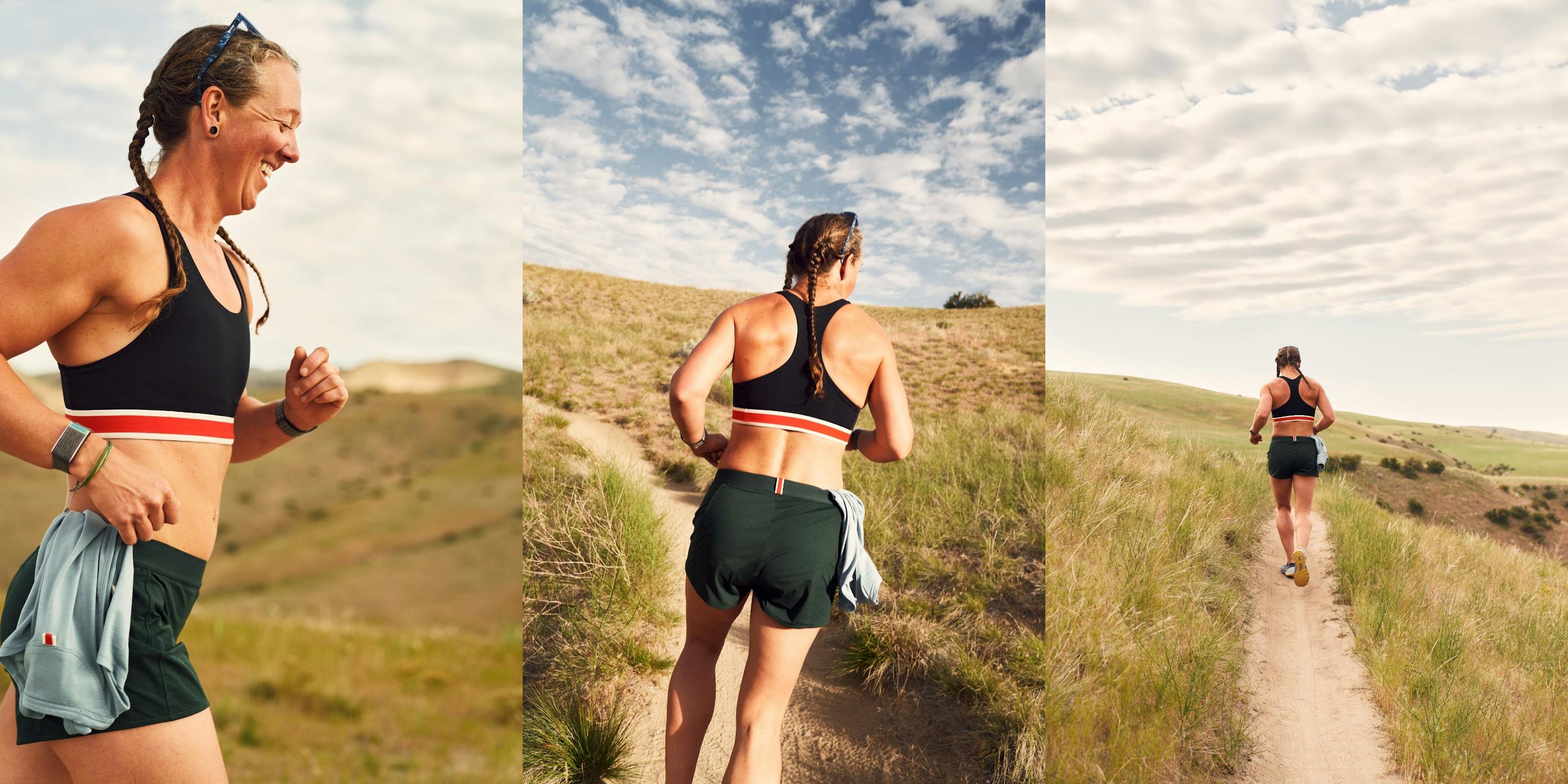
The tests are usually done in groups — kind of a sizing up of who really stayed in shape in the off season, like the first track practice after a summer of solo running. This year, Martha is on her own. The others haven’t arrived yet and Martha has a number of things to do to get ready for the season, so she sets her own pace. In many ways, she doesn’t have an off season, so she’s always in shape, winter, spring, summer or fall.
Martha grew up in “Down East” Maine. The term refers to boats sailing down wind and to the east from New York and Boston. The area defines sea level and is as far east as you can get in the United States. It’s the first place in the country to see the sunrise. Think picturesque harbors, rocky cliffs and calendar-worthy lighthouses.
Martha practiced classical piano and ballet from the time she was five years old until she was in college. Perhaps that’s where her ongoing self-discipline comes from. “My childhood involved lots of playing in the woods, camping, doing homestead chores like stacking wood, weeding the garden, and collecting chicken eggs,” she says. “I did one season of high school cross country, but I beat up my shins and that didn't make dancing on point very comfortable so I didn't play any other team sports.”
Of the 400 smokejumpers across the country, nine are women. The job requires years of fire experience and peak physical fitness. Many of the most extreme physical and mental demands of the job happen before they even reach the fire. Jumping 3,000 feet from a plane into perilous terrain, hiking with a 130-plus pound pack in all kinds of weather, and digging fire lines (clearing anything that can burn — pine needles, grass, leaves — down to the soil, 3-feet wide) for 16 hours at a time, earns smokejumpers their reputation as being physically and mentally tough.
No matter how many times she’s done it, jumping out of an airplane always brings nerves. More excitement than anxiety, but nerves nonetheless. While Martha and her crew control what they can, the wind sneaks as an updraft or a downdraft. So much can happen in 3,000 feet and many decisions have to be made in split seconds. “One of my favorite parts about jumping is being able to see everything from the air.” This aerial view allows Martha to make tons of decisions about strategy, all the while thinking about where she could safely land.
Smokejumpers train extensively for landing in a tree, which isn’t a bad alternative to smashing into rock, or hitting the ground in a way that will likely break bones. Smokejumpers are experts at not only landing in, but also getting out of trees.
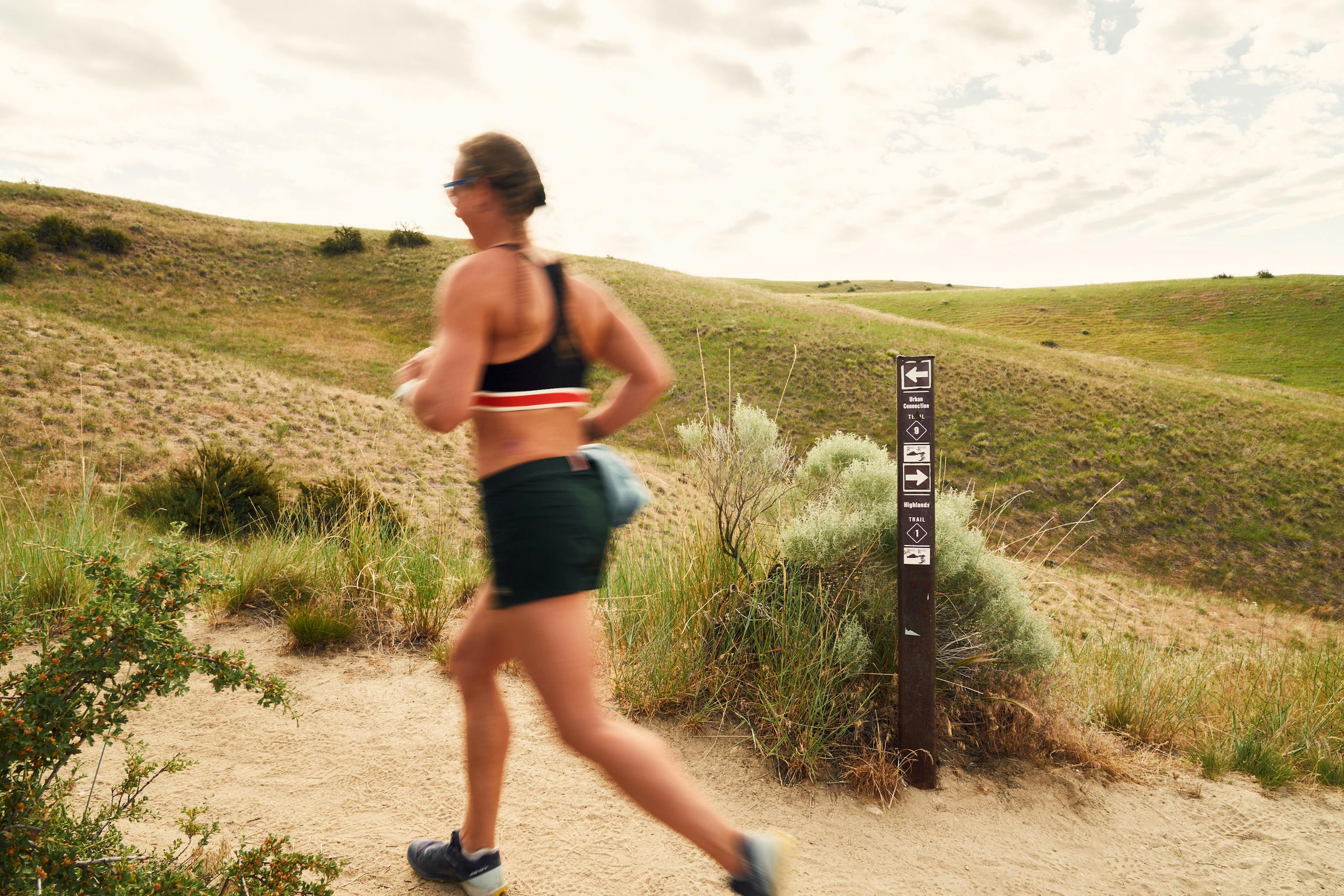
Durango is about 2,500 miles from Martha’s childhood home, and Boise is even farther. But Martha started getting a taste for travel and trying new things from a young age. She attended Oberlin College in Ohio and studied Environmental Studies while continuing to dance. During a summer home from school, she was introduced to timber sports: axe throw, log roll, speed climb, hot saw, and crosscut. She began competing and performing and eventually went to the Lumberjack World Championships in Hayward, Wisconsin to compete in semi-pro logrolling. She was the first woman to ever compete in the up-and-down speed climb to the 60ft mark on the climbing poles. “I was clearly an amateur,” she says, “but wanted to inspire other women to climb too.”
After college, Martha traveled alone through South America, spending two months exploring Ecuador and Peru. When she returned to the States, she knew she wanted to do something in the outdoor industry. She landed a gig in Wayne County, Utah, working for a wilderness therapy program for youth who had entered the justice system. The job as a field staff member involved shifts of eight days on, six off in the outdoors. Year-round, she’d sleep in a bivy and backpack daily, facilitating group and individual therapy sessions, and teaching the educational program. It was a lot of responsibility, mentoring and keeping 12 teenagers safe and accounted for. “Our program was considered a medium security facility because of the remoteness, the rules, and the close eye we had on these wards of the state at all times,” she says. “I grew up backpacking and knew how to rough it, so the job was a good fit.” While she was in Utah, Martha was introduced to rock climbing, canyoneering, serious mountain biking, and general dirtbag living. All the while, she understood her life wasn’t what most consider successful, but surrounding herself with natural beauty and the right people was its own reward.
Next, Martha applied for US Forest Service trail crew jobs and got hired onto a wilderness trails crew out of Cody, Wyoming. Part of the job training was taking the basic wildland firefighting courses required to work on the fire lines. The trail crews weren’t needed to help on the fire lines that year, 2004, but plenty of hard work was performed opening up and improving trailers throughout the Shoshone NF. The chainsaw and crosscut skills learned in timber sports got to be applied to real life and Basic Firefighting and Wildland Fire Behavior courses led to her earning her Red Card, which qualified her to work on fighting wildfires. Her lumberjack sports experience paid off. She was doing a lot of similar climbing and cutting work. And she loved working nearly all day long for 10-day shifts. All she wanted to do was keep pushing herself.
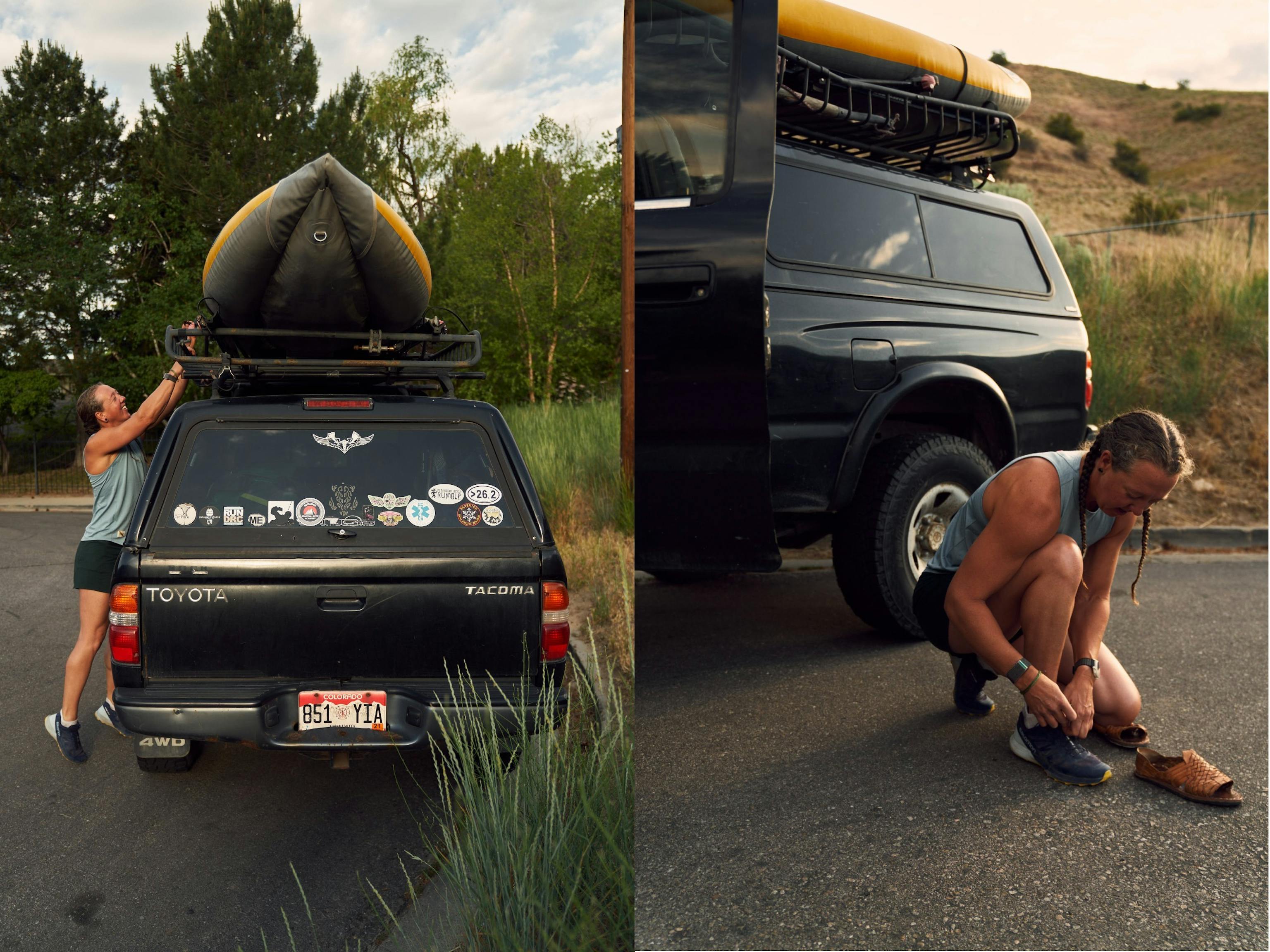
In 2010, Martha worked her first season as a crew member on USFS engine E662 in Montrose, Colorado. “My engine boss gave me a heads up that we would be doing a lot of running, so I did a four-mile run on the Uncompahgre River Walk there in Ouray a few days before I started,” she says. “I figured I was good.” A friend told her about a CrossFit class she had taken on Pose running technique. “I had always had issues with shin splints and neck pain during the few and far between runs,” she says, “so I looked the class up, did some short test runs on the concrete bike path, and switched my running style to a forefoot strike. When I started running with the crew, a few days later, this new, lower impact running style made all the difference in comfort and running longevity.”
She kept working on fire crews, but it wasn’t intense enough to keep her satisfied. Martha’s sister was training for a marathon in Denver. “I ran 10 miles with my sister, the most I'd ever run, and was surprised how good I felt.”
Martha read Born to Run by Christopher McDougall and became obsessed with finding the kind of joy through running that McDougall mentions in his book. She ran a 12-mile Tough Mudder, and then the Imogene Pass 17-miler, which goes up and over a 13,000-plus foot mountain pass. She signed up for the Denver Rock and Roll Marathon and found it to be a struggle. She dropped out at the halfway mark. “I was really upset by how sore I was and wanted redemption, so I registered for the Moab Trail Marathon a month later,” she says. Once she finished the Moab race, she knew trail running was more her style. “It was pouring rain the whole night before the race, making a challenging course even more challenging. I was crushed and delighted by the technical trails and varied terrain. The moment I crossed the finish line, I marveled to myself that people ran double this distance. I decided at that moment, struggling to remove my shoes without cramping, that I'd find a 50 miler to train for that winter,” Marta says.
After Moab, she ran the Old Goat 50 Miler in Southern California. With each new event, she wanted to push herself farther. In 2013, she went back to the Santa Ana Mountains for the Chimera 100 Miler, then three months later, she ran the Susitna 100 Miler in Big Lake, Alaska. These races all prepared her for the 350-mile Iditasport, which involves pulling a sled of supplies over ice and snow, sometimes dirt or water, often in temperatures well below zero. Compared to a timed 5K, these events are less about running and more about survival. She learned how to fuel and rest and talk yourself through the hours and days largely alone. “Pulling a sled of supplies is like running with a dog that isn’t trained on a leash,” she explains. “It always seems to be fighting against you.” Eventually she found a calm — when it seemed like she had reached her physical and mental limit, things started to click in a way that seemed impossible on fresh legs and a rested mind. That’s where the magic is for Martha. “You go deep inside yourself every time.”
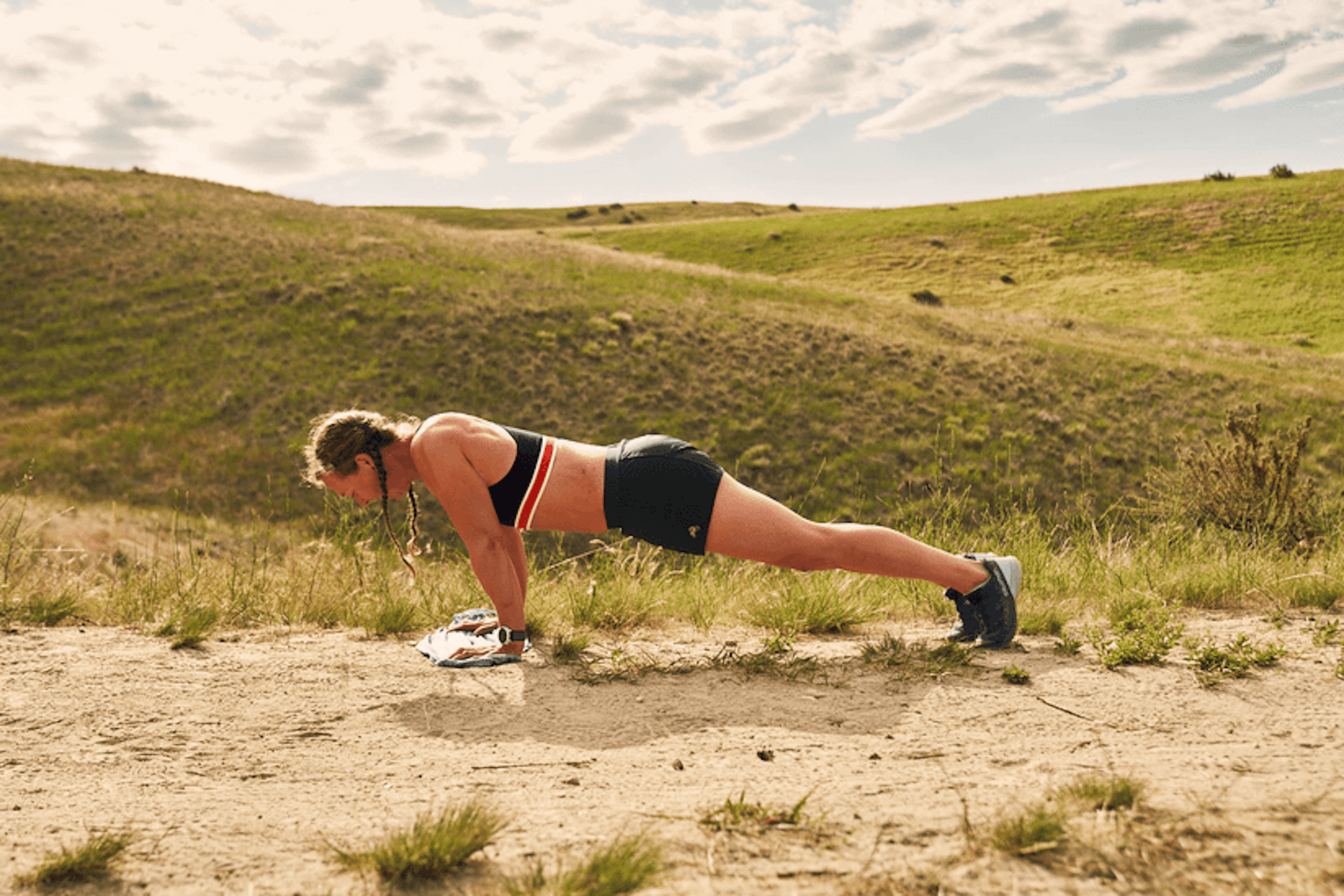
Back in Boise, Martha bought her first running watch, so she could see her pace for the timed run. Usually, she runs so far or over such intense terrain, that pace doesn’t really enter her mind. But as she set out, she realized it wasn't working. So she just went by feel, rolled with whatever came her way, and tried not let anything affect her mind or body.
The rain and lack of others pushing her hindered her effort. Still, she finished her 5K in 21:56, missing her PR by about 10 seconds. She tested her strength, doing more pull ups than she had ever done — 20 nonstop — and crushed the minimum requirement of 60 sit ups with 101. Then she finished off with 53 push-ups.
People like to say that age is just a number, but for Martha, it is especially true. At 42, she looks young, like age has never occurred to her. With long braids, in some ways, she’s still 7-years-old, staying outdoors as long as possible, always with dirt under her fingernails. In other ways she’s perfectly 42, comfortable with who she is and skilled in a way that can only come with tons of repetition. Still, mandatory retirement from smokejumping looms for when she turns 57. Barring any unforeseen obstacles, Martha fully intends to keep jumping for another 15 years.
In the same way, Martha remains passionate about longer distances in running. Certainly unexpected things can happen in a 5K or 10K, but once you start looking at 100 miles or more, part of the excitement is figuring out what to do when things go wrong with ever shifting puzzle of gear, nutrition, elements, and endurance. Before Martha jumps from a plane, lands on the ground, and assesses the situation, she doesn’t necessarily know if the best thing to control that fire is ordering trucks, a bulldozer, a water scooper, or if she needs to start digging fire lines herself. And when she starts a footrace of epic proportions, she doesn’t know when she’ll get hot or cold or cramp. In both versions of her life, she loves to find out. She loves to problem solve and push her limits. She’ll stay up all day and night, chasing adventure and waiting for the inevitable to unfold, learn from it, and become stronger the next time around.
